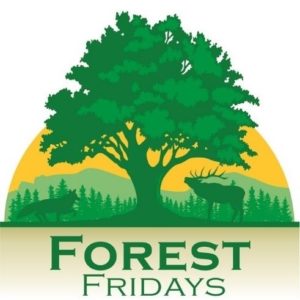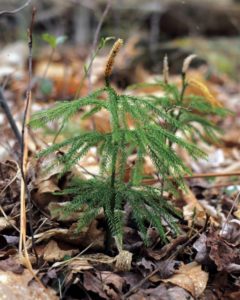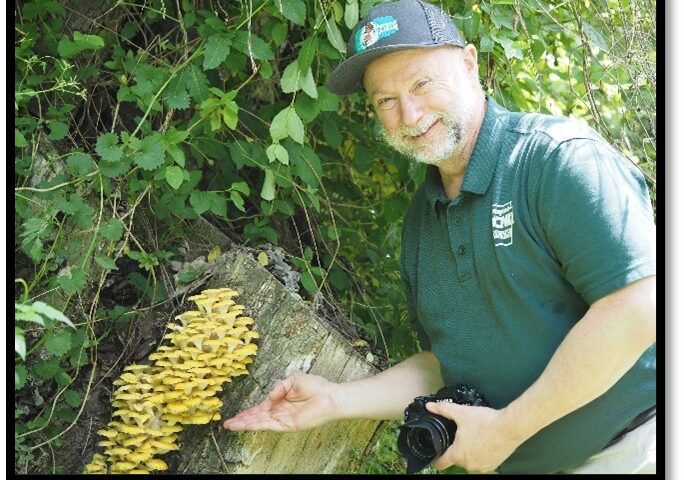
By Ryan Reed
To the untrained eye, ground pines appear to be little evergreen seedlings. The most commonly observed ground pines are Diphasiastrum digitatum, (also called running pine or crows foot), and Lycopodium dendroideum, L. hickeyi and L. obscurum, all known as ground pine or princess pine.
 Although they may look like pines, these species are not pines at all, rather belonging to an ancient group of plants called club mosses. Club mosses are closely related to two other primitive taxa- the ferns and horsetails, and evolved over 400 million years ago, predating even the dinosaurs. Amazingly, over 1,200 species of club mosses still persist today around the world.
Although they may look like pines, these species are not pines at all, rather belonging to an ancient group of plants called club mosses. Club mosses are closely related to two other primitive taxa- the ferns and horsetails, and evolved over 400 million years ago, predating even the dinosaurs. Amazingly, over 1,200 species of club mosses still persist today around the world.
Perhaps even more remarkable, some club mosses during the Carboniferous Period grew to over 100 feet tall and six feet in diameter, dwarfing their current descendants by many orders of magnitude.
Modern club mosses, like the princess pine pictured at left, are soft to the touch and actually resemble cedars more than they do pines. Favoring the dark and damp understory, these neat little plants seem to thrive in many areas throughout Penn’s Woods.
Club mosses reproduce via spores and rhizomes (lateral stems just below the surface of the ground). Having more than one way to reproduce is an obvious reproductive advantage, but these species are not without threat. Commonly harvested for holiday wreaths and some other historically dubious applications (e.g. fireworks and latex), most botanists are keenly aware of their potential for exploitation and over-harvest.
Although it is illegal to take club mosses from DCNR-managed lands, many people will still do so on private forests for decorating for the upcoming holiday season. It is recommended when harvesting these plants to practice ethical harvesting methods. Some may just pull the plants with their rhizomes, but this removes many years of growth and hinders regeneration. A better way is to cut aerial stems and leave the rhizomes. Also, avoid harvesting from a patch that was previously harvested, instead allowing a period of years for regrowth.
Next time you’re out and about and notice these cool, primitive plants, take a moment to appreciate the longevity and beauty of these ancient and perfect little “pines”.
Special thanks to Chris Firestone for her botanical expertise!
Forest Fridays is a feature of the DCNR Bureau of Forestry.




